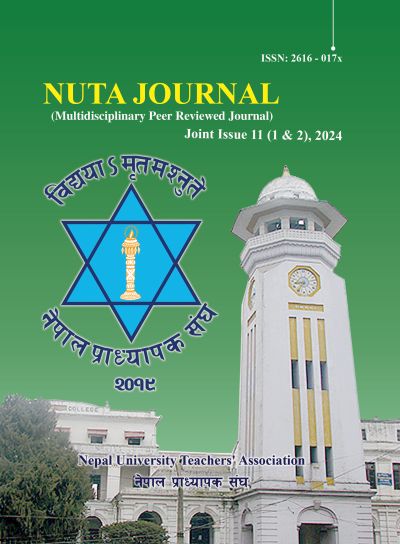Contours of Alternative Development: A Systematic Literature Review
DOI:
https://doi.org/10.3126/nutaj.v11i1-2.77021Keywords:
alternative development, sustainability, grassroots participation, empowerment, ecological balance, systematic literature reviewAbstract
Alternative development (AD) emerged in the 1970s as a transformative development framework that challenged traditional growth models while prioritized people, sustainability, and grassroots participation. In these five decades, a multiple faces of alternative development emerged demonstrating shifts in its themes and agendas. Sometimes its voices coopted to mainstream development, some other times posturing itself as the mainstream. A considerable studies examined the evolution of AD, however, there is still a limited systematic understanding of its conceptualization, methodologies, and practices. This paper attempts to track the trajectory of AD before and after 2008 through systematic review of literature. The demarcation point 2008 means that due to global financial crisis global as well as national development paradigms shifted tremendously in this era. Therefore, a comparison of alternative development themes before and after 2008 could provide a general frame of analysis. A systematic literature review method was applied to investigate the evolution of AD, concentrating its shifts on conceptual, methodological, and programmatic aspects. The review adhered to strict protocols, including screening, data extraction, and quality assessment, to ensure methodological rigor and reliability. Peer-reviewed journal articles, academic books, and conference proceedings from 1970 to 2024 were analyzed to capture both historical and contemporary perspectives on AD. The findings indicate a notable shift in the field of AD, moving from grassroots models that prioritized equity and sustainability to more globally integrated frameworks that align with initiatives like the Sustainable Development Goals (SDGs). Before 2008, AD was marked by critiques of economic growth models, focusing on local empowerment and ecological balance. After 2008, AD has broadened its scope to tackle global issues such as climate resilience, technological innovation, and participatory governance, all while upholding its fundamental principles of inclusivity and sustainability. By merging historical and contemporary viewpoints, this study offers important insights into the development trajectory of AD and its significance in confronting modern issues like climate change, inequality, and resource depletion.
Downloads
Downloads
Published
How to Cite
Issue
Section
License
© Copyright by NUTA JOURNAL
All Rights Reserved. No part of this Journal may be reproduced in any form or by any electronic or mechanical means, including information storage and retrieval system without prior permission in writing from the publisher, except by a reviewer who may quote brief extracts while reviewing.

